
| Publisher: | Ecco | |
| Genre: | Women, Psychological, Literary, Fiction | |
| ISBN: | 9780062883223 | |
| Pub Date: | August 2019 | |
| Price: | $26.99 |
| Starred | Fiction |
by Madeline Stevens
Something went deeply wrong while Ella was working as a nanny for Lonnie and James. Debut novelist Madeline Stevens opens Devotion six months after Ella's employment ends, when James drunkenly appears at the small apartment she shares with a roommate. She wonders if he realizes how many of the books on the shelves were taken from his house. Starting from that prologue, a sense of menace grabs the reader. When the first chapter jumps back to Ella's hiring and how working for the wealthy couple will change her life of scraping for food and rent, it is clear that lives will ultimately be ruined.
Far from her family and without close friends, Ella becomes increasingly obsessed with Lonnie, who is about her own age and casually blurs the lines between a professional relationship and friendship. The deceptively casual way in which Ella recounts reading Lonnie's journal or taking her things builds the sense of foreboding. Maybe Ella wants to be Lonnie, or maybe she wants to be with her, but alongside the envy and desire lurk clues that she could just as easily destroy the glittering world into which she has been allowed. The horrific culmination is difficult to read, but nothing less would be appropriate for this dark, absorbing novel. Although the protagonists are in their 20s instead of their teen or tween years, this is one for fans of such friendship-gone-wrong stories as Marlena by Julie Buntin and The Girls by Emma Cline. --Kristen Allen-Vogel, information services librarian at Dayton Metro Library

| Publisher: | Restless Books | |
| Genre: | Hispanic & Latino, Humorous, General, Literary, Fiction | |
| ISBN: | 9781632061126 | |
| Pub Date: | July 2019 | |
| Price: | $17.99 |
| Fiction |
by Fernanda Torres, trans. by Eric M.B. Becker
Once upon a time, Mario Cardoso was "a god beneath the spotlight, a counterculture sex symbol, archetype of the ideal man, Dionysus reborn." With no lack of youthful passion, he quits his architecture studies to join the chorus of a raucous production of Hair and quickly rises to superstardom on stage and screen. Collecting accolades, fans, lovers (in addition to an Oxford-educated, upper-class wife), decades pass, until one day he admits he's "a lazy actor in league with bloodsuckers raiding the national treasury," easily bought by corporations eager to capitalize on artistic sponsorships now that Brazil's quarter-century-old dictatorship seems finished.
Middle age is not treating Mario well. Cast in a Stone Age-set production of King Lear, Mario bursts on stage, wearing stifling sheepskin costumes, and descends into unstoppable laughter, "overcome with a childish, demented, diabolic joy." The madness of the betrayed monarch becomes Mario's own, and he never quite regains control. "Catastrophes travel in packs," of course, and off-stage, Mario's personal life continues to implode as he's called to his mother's hospital bedside, where she mistakes him for her husband. The drama is about to get much, much worse.
Brazilian actor Fernanda Torres writes about what she knows, while writer, editor and translator Eric M.B. Becker provides English-language audiences ready access to Torres's affecting performance on the page. Having alchemized theater into her standout debut, The End, Torres returns with another tragicomedy about the cost of "this bind they call fame"--the irresistible lure, the blinding reception, the fickle adoration and the unrelenting need for reinventions. --Terry Hong, Smithsonian BookDragon
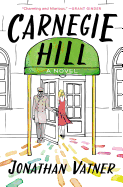
| Publisher: | Thomas Dunne Books | |
| Genre: | Women, Family Life, Humorous, General, Fiction, LGBT, Gay | |
| ISBN: | 9781250174765 | |
| Pub Date: | August 2019 | |
| Price: | $27.99 |
| Fiction |
by Jonathan Vatner
Penelope "Pepper" Bradford may be rich and unemployed, but she can't be said to be idle. When she and her wealth manager fiancé, Rick, move into the Chelmsford Arms, located in Manhattan's tony Carnegie Hill neighborhood, she immediately joins the building's co-op board. Unlike many of literature's rich folk, Pepper is brutally self-aware: "At least the co-op board was something to distract her from the black hole of her achievements."
At her first board meeting, Pepper meets Francis, who still thinks of himself as "a fatherless Jewish boy from the Bronx... not a retiree in the godless Upper East Side." Francis shares Pepper's progressivism, and they both want to do something about the building's lack of minority representation. They are met with resistance from the old guard, which bristles at anything that gestures toward change.
Carnegie Hill's perspective shifts among Pepper, Rick, Francis and three other halves of the four couples whose lives play out at the Chelmsford Arms. Set in facelifted mid-2010s Manhattan, the book has the signposts of a sudsy drama: when secrets are revealed, it's against a backdrop of brand-name luxury goods. But Jonathan Vatner's debut novel is no soap opera: it's more of a juicy exposé. At one point, Francis tells Chelmsford Arms porter Caleb, who is romancing closeted doorman Sergei, that Kafka's The Trial "will teach you everything you need to know about the politics of this building"; Carnegie Hill can teach readers something about the politics of integrity in an endlessly morphing American city. --Nell Beram, author and freelance writer

| Publisher: | Crown | |
| Genre: | Dystopian, Hard Science Fiction, Thrillers, Fiction, Technological, Science Fiction | |
| ISBN: | 9781984823793 | |
| Pub Date: | August 2019 | |
| Price: | $27 |
| Mystery & Thriller |
by Rob Hart
After a few setbacks in his career, Paxton is feeling hopeful again, even though he's among dozens of people being bused to a dusty town to apply for a job at Cloud, a giant retailer that has taken over much of the economy. If Paxton is hired, he won't need to worry about housing or health care; the company provides on-site apartments and medical services. Never mind that it doesn't pay minimum wage or in cash and makes employees work seven days a week--Cloud takes care of everything! Paxton's main motivator, however, is a chance to meet Cloud's CEO, Gibson Wells. The man is responsible for the failure of Paxton's small business, and Pax looks forward to giving Wells a piece of his mind.
Paxton befriends Zinnia, another applicant, but she's actually a corporate spy hired to gather information on Cloud's infrastructure and investigate whether the company is as eco-conscious as it claims. Neither she nor Paxton intend to stay at Cloud very long, but with the 24/7 surveillance, it might be impossible for them to get away with anything--or get out alive.
Rob Hart's The Warehouse may be labeled sci-fi but feels unnervingly plausible. The bleak world he paints is rooted in reality, in how the rich get more powerful while the poor are crippled, financially and physically. Hart writes convincingly in three points of view: Paxton's hopeful voice, Zinnia's no-nonsense determination and Wells's "I'm a good guy" explanations. The understated prose doesn't scream that the world is in trouble. It simply creeps up and whispers that perhaps the future is already here. --Elyse Dinh-McCrillis, editor at The Edit Ninja
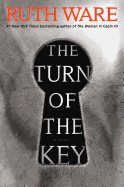
| Publisher: | Gallery/Scout Press | |
| Genre: | Psychological, Literary, Suspense, Thrillers, Fiction | |
| ISBN: | 9781501188770 | |
| Pub Date: | August 2019 | |
| Price: | $27.99 |
| Mystery & Thriller |
by Ruth Ware
Ruth Ware (The Death of Mrs. Westaway, The Woman in Cabin 10) turns to the Scottish Highlands in her fifth novel. Rowan Caine is working at a nursery school in London, hating her daily grind, when she sees an advertisement for an incredibly well-paying nanny job in Scotland. She travels to meet the family and discovers a gorgeous old home with a slightly strange vibe. The owner explains that ghosts have been rumored to be in the house, which is why they pay their nannies so well.
Because of a commitment to attend an architectural conference, the parents depart almost immediately upon Rowan's arrival, leaving her with three small, hostile children and a smart house that she struggles to control from the app on her phone. As the story progresses and the house's smart systems start acting up, Rowan begins to worry she's losing her mind. But she has no idea that things will accelerate to the point where a child is dead, and she is in prison, awaiting her trial for murder.
Breathlessly atmospheric, The Turn of the Key is a deliciously creepy mystery in homage to Henry James's The Turn of the Screw. The smart house's malfunctions will seem all too realistic for modern readers who struggle with their own technology. The tension is strong as Rowan gradually unfolds her side of the story to a lawyer, admitting that she lied to get the position, but swearing that she's not guilty of murder. Ware's twist on a classic is sure to be a hit for fans of psychological thrillers. --Jessica Howard, bookseller at Bookmans, Tucson, Ariz.
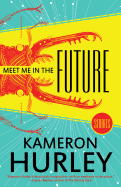
| Publisher: | Tachyon | |
| Genre: | Collections & Anthologies, Short Stories (single author), Fantasy, Hard Science Fiction, Fiction, Action & Adventure, Science Fiction | |
| ISBN: | 9781616962968 | |
| Pub Date: | August 2019 | |
| Price: | $16.95 |
| Science Fiction & Fantasy |
by Kameron Hurley
The speculative stories collected in Meet Me in the Future are brutal, touching and truly fantastical. Like Ursula K. Le Guin, Hurley has an unlimited imagination and the ability to understand the full implications of her creations. The opening tale, "Elephants and Corpses," for instance, follows a body mercenary with the ability to move their consciousness to fresh cadavers once their own body expires. Hurley uses her conceit to grapple with difficult questions: What does it mean never truly to die? How much of the original person is left after lifetimes of hopping between bodies? Does knowing death's inevitability make life more meaningful? This is the work of a writer who knows to place extreme beauty and horror within the same spectrum of experience.
Elements of plague, corpses and perpetual war occur over and over in the collection, as if the darker aspects of this world are moving into other ones. In all worlds, Hurley's characters must carry out ruthless, even horrific actions because of their circumstances. The old witch of "The Plague Hunters" is forced into bloody confrontation with the woman she loved, to stop her from unleashing destruction. In "The Light Brigade," a soldier faces the bitter truth of the privatized war they've been fighting with a supposed enemy.
The stories of Meet Me in the Future never look away from the darkness of their settings. Yet there is room always for love and joy, and the sheer triumph of surviving another day, of doing what needs to be done. Hurley's collection is one of the best of 2019. --C.M. Crockford, freelance reviewer.
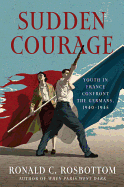
| Publisher: | Custom House | |
| Genre: | Europe, History, France, Germany, Military, World War II | |
| ISBN: | 9780062470027 | |
| Pub Date: | August 2019 | |
| Price: | $27.99 |
| History |
by Ronald C. Rosbottom
In Sudden Courage: Youth in France Confront the Germans, 1940-1945, historian Ronald C. Rosbottom (When Paris Went Dark) examines the often underestimated role played by young people in the French resistance against both the Nazis in Occupied France and the collaborationist policies of the Vichy regime under Marshal Philippe Pétain in World War II.
Rosbottom begins by describing what it was like to grow up in 1930s France, with an emphasis on the long shadow of World War I, the popularity of detective stories and movies, and the rise of leftist politics. When Germany invaded France on May 10, 1940, French adolescents' lives were disrupted. An astonishing number of them chose to fight back.
Drawing on memoirs, letters and other accounts of young resisters, Rosbottom looks at what led individuals to join the resistance and how inherent qualities of adolescence, such as the urge to challenge authority, contributed to the impulse to resist. He explores the range of resistance activities, which included jeering at German-produced newsreels in darkened movie theaters, joining combat groups and helping hide Jewish children. He examines the way gender roles shaped acts of resistance. He discusses the importance of existing youth groups, which provided a foundation for coordinated resistance, particularly the Jewish Scout group and communist youth groups. And he makes it clear that the costs were often high.
Sudden Courage is a complicated and inspiring portrait of youthful resistants: their successes, their failures, their occasional inconsistency and their undoubted courage. --Pamela Toler, blogging at History in the Margins
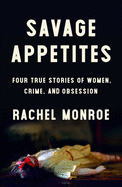
| Publisher: | Scribner | |
| Genre: | True Crime, General, Murder, Social Science, Criminology | |
| ISBN: | 9781501188886 | |
| Pub Date: | August 2019 | |
| Price: | $26 |
| Starred | Social Science |
by Rachel Monroe
Rachel Monroe has been "murder minded" since childhood, part of an overwhelmingly female demographic that consumes true-crime books, podcasts and television shows. It's an obsession that makes her a little uncomfortable. Monroe's first book, Savage Appetites: Four True Stories of Women, Crime, and Obsession, explores these interests through four case studies: detective, victim, defender and killer.
Frances Glessner Lee became an expert on early forensic studies and built the Nutshell Studies of Unexplained Death, miniature houses (fully functional, furnished and wired) portraying crime scenes. Twenty-one years after the Tate murders, Alisa Statman moved into the garage apartment at the former Tate-Polanski residence. She avidly studied the case and befriended Patti, Sharon Tate's youngest sister. The West Memphis Three were teenaged boys wrongfully convicted of murder because they were social outcasts. Their story, and one of them in particular, caught the attention of Lorri Davis, who moved cross-country and devoted her life to freeing him from death row; they are now married. And as an awkward teenager, Lindsay Souvannarath nursed a growing interest in mass murder. At 22, she met her match in a young man with a plan.
These case studies, exploring the archetypes that structure our thinking about crime, are intercut with stories of Monroe's own life, her own guilty obsessions and research. Monroe attends CrimeCon and Souvannarath's sentencing hearing, giving herself nightmares, and ultimately mines her personal experience of true-crime obsession to question the appeal of violent crime. Savage Appetites is a chilling, compelling examination of the darkness in us all. This is obviously a book for true-crime fans, as well as anyone interested in human nature. --Julia Kastner, librarian and blogger at pagesofjulia

| Publisher: | One World | |
| Genre: | Biography & Autobiography, Discrimination & Racism, Political Process, Civil Rights, Personal Memoirs, Anthropology, Political Advocacy, Cultural & Social, Social Science, Political Science | |
| ISBN: | 9780525509288 | |
| Pub Date: | August 2019 | |
| Price: | $27 |
| Social Science |
by Ibram X. Kendi
Following the publication of Stamped from the Beginning: The Definitive History of Racist Ideas in America--winner of the 2016 National Book Award for Nonfiction--Ibram X. Kendi found that conversations about his book centered on one question: What can we do?
How to Be an Antiracist is his pressing, penetrating answer. In it, Kendi builds a framework for thinking differently about racism and racist policies, proposing "a radical reorientation of our consciousness" and conversations on the subject. "We know how to be racist," Kendi contends. "We know how to pretend to be not racist. Now let's know how to be antiracist." An example, based on studies of high-level education but low wages among black immigrants: "An ethnic racist asks, Why are Black immigrants doing better than African Americans? An ethnic antiracist asks, Why are Black immigrants not doing as well as other immigrant groups?"
Kendi helpfully defines terms for building this new understanding, drawing on a diverse range of scholarship showing how racist ideas and policies have evolved throughout history. His writing is memorable and sharp, radiating compassion and empathy. Kendi reflects on his own (and others') past racist behaviors and ideas, sharing poignant and painful personal stories interwoven with meticulous research and thoughtful, incisive commentary. Tightly focused chapters allow deep study of the many territories racism infects: biology, ethnicity, the body, culture, behavior, gender, sexuality.
Urgency also saturates How to Be an Antiracist. Kendi almost didn't get to write it--he was diagnosed with Stage 4 colon cancer in 2018. Luckily, his treatment was successful, and he survives. His work undoubtedly will, too. --Katie Weed, freelance writer and reviewer
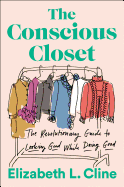
| Publisher: | Plume | |
| Genre: | Self-Help, Industries, Fashion & Textile Industry, Sustainable Living, House & Home, Business & Economics, Fashion & Style | |
| ISBN: | 9781524744304 | |
| Pub Date: | August 2019 | |
| Price: | $17 |
| Psychology & Self-Help |
by Elizabeth L. Cline
In her first book, Overdressed, journalist Elizabeth L. Cline took a hard look at the fast-fashion industry and its high (often hidden) costs for consumers, clothing factory workers and the environment. Seven years later, she's back to share further insights on shopping sustainably--and how it can lead to looking better and saving money. The Conscious Closet, Cline's second book, is a smart, practical successor to Overdressed and a helpful primer on ethical fashion.
Cline begins with a "conscious-closet cleanout," urging readers to purge their closets and send their old clothes where they'll do some good. Once that's done, Cline moves on to "The Art of Less," which, not surprisingly, lays out strategies for buying fewer pieces and shopping more mindfully. The next section, in a counterintuitive twist, is "The Art of More." This is where Cline indulges both her inner bargain hunter and her deep delight in bold statement pieces. She explores wardrobe rental services such as Rent the Runway and consignment sites like ThredUP, and reminds readers of the potential delights of good old-fashioned thrifting. She then turns her attention to truly sustainable fashion and its related habits: washing clothes less often and more gently, maintaining garments with basic skills (or calling in the pros), and supporting brands that make their clothes ethically and--crucially--pay their workers a living wage.
Practical, informative and fun, The Conscious Closet provides a plethora of helpful tips, sustainable brands to check out and solid advice on not only shopping more ethically, but buying higher-quality clothes that will last. --Katie Noah Gibson, blogger at Cakes, Tea and Dreams
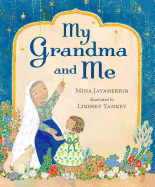
| Publisher: | Candlewick | |
| Genre: | Middle East, People & Places, Islam, Religion, Family, Juvenile Nonfiction, Multigenerational | |
| ISBN: | 9780763694944 | |
| Pub Date: | August 2019 | |
| Price: | $16.99 |
| Starred | Children's & Young Adult |
by Mina Javaherbin, illust. by Lindsey Yankey
For a little girl growing up in Iran, her grandmother is her beloved conduit to the rest of the world. "I followed her everywhere," she explains. "When she swept, I swept. When she cooked, I cooked. When she prayed, I prayed like her, too." Without overt announcement, the family's Muslim practices are revealed through namaz (prayers) at dawn, iftar (post-sunset meal) during Ramadan and a lively gathering at the mosque. Girl and Grandma also share best friends who live down the hall. Their differences might seem obvious--one grandmother with uncovered silver hair, the other in a white-with-purple-flowers chador; one girl who attends church, the other a mosque--but the intergenerational, mutual enjoyment never wavers. Grandma, meanwhile, stays forever constant, "kind, generous, and full of love," encouraging the girl's imagination and out-of-this-world determination.
In Mina Javaherbin's (Neymar) autobiographical My Grandma and Me, the grandmothers build a nurturing world for the next generation, with safe spaces from which to launch. While the girls play hopscotch, the grandmothers make quilts that will keep strangers warm, donated through their respective mosque and church. While the girl writes, Grandma sews gorgeous chadors... that the girl will later drape "on the table to build [a] rocket ship" or turn into a magical "super-astro-explorer" cape. Artist Lindsey Yankey's (Sun and Moon) soft, detailed art, reminiscent of Grace Lin's illustration, is a splendid complement to Javaherbin's loving homage. Yankey's intricate designs enhance every texture--rugs, clothing, home furnishings--inviting closer observations and encouraging deeper interaction and understanding. Decades after playdates and coffee klatches, what lingers longest are the binding memories of unwavering, accepting love. --Terry Hong, Smithsonian BookDragon
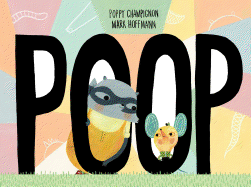
| Publisher: | Cameron Kids | |
| Genre: | Concepts, Humorous Stories, Animals, Health & Daily Living, Words, Mice, Hamsters, Guinea Pigs, etc., Mammals, Juvenile Fiction, Toilet Training | |
| ISBN: | 9781944903749 | |
| Pub Date: | August 2019 | |
| Price: | $14.95 |
| Children's & Young Adult |
by Poppy Champignon, illust. by Mark Hoffmann
Let's face it: For a certain young demographic, potty talk is comedy gold. In Poppy Champignon's Poop, the toilet humor reaches lofty new heights--or is it lows?
It starts with a word: "Poop," a raccoon tells a mouse, apropos of nothing. "Nope, coop," replies the mouse one page later, and it's true--raccoon and mouse are shown standing in front of a chicken coop. The raccoon tries again: "Poop." "Nope, loop," the mouse counters on the following page. Correct again--they are now watching a paper airplane's circuitous flight path. On it goes, until it's time for a scoop of ice cream. This time when the raccoon, who has just spilled the contents of its cone and is wearing a big chocolate smear on its overalls, says "Poop," the mouse can't deny it: "Yep."
Ah, but there's more to Poop than wordplay. Mark Hoffmann tips off the reader about each upcoming new rhyme for "poop" by planting a visual on the page: an airborne basketball precedes "Nope, hoop"; gray lines wafting in the air set up "Nope, soup"; and so on. Getting in on the action on every page are members of an all-animal cast that isn't conforming to any expectations: the raccoon is bear-size, the mouse has big blue ears and a sheep wears a green mohawk. A note of caution: Watch out for the pug on the first page. It pretty much disappears until the book's final image, in which it leaves the reader a, um, present. --Nell Beram, freelance writer and YA author